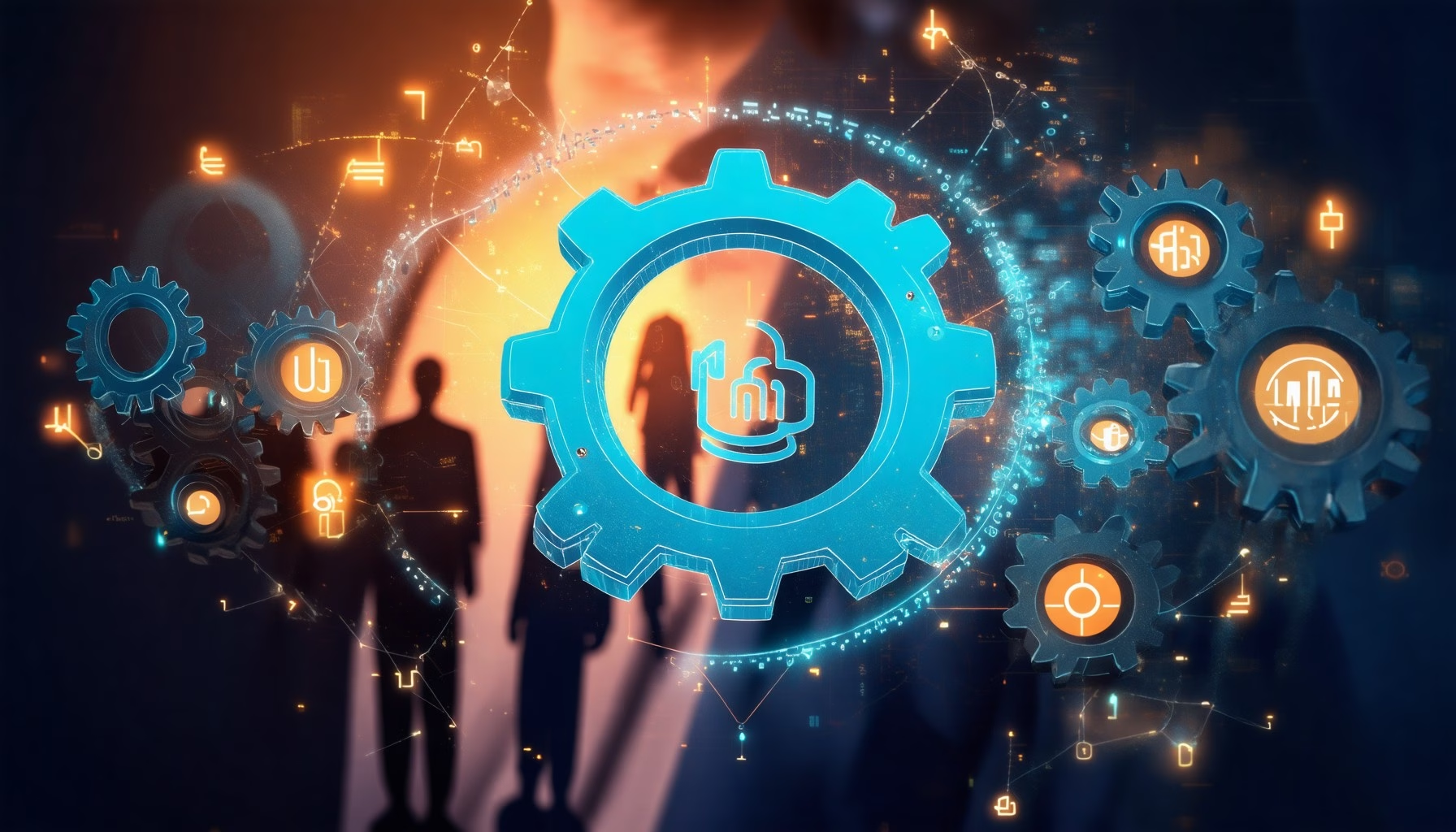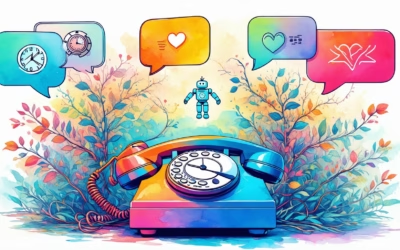Key Takeaways
- Mastering customer care KPIs is crucial for enhancing customer satisfaction and driving business success.
- Key metrics like Customer Satisfaction Score (CSAT) and Net Promoter Score (NPS) provide actionable insights into customer loyalty and service quality.
- Implementing a structured KPI dashboard for customer service helps visualize performance and identify areas for improvement.
- Regularly measuring First Contact Resolution Rate (FCR) and Average Handle Time (AHT) can significantly boost customer retention.
- Leveraging automation tools, such as Messenger Bots, enhances response times and overall customer experience.
In today’s fast-paced business environment, mastering customer care KPIs is essential for any organization aiming to enhance customer satisfaction and drive success. Understanding what constitutes effective customer KPIs can transform your approach to service delivery, enabling you to track performance and make data-driven decisions. This article will delve into the key metrics that define exceptional customer service, explore the relationship between KRA and KPI in customer care, and identify the top five KPIs that are crucial for measuring customer success. Additionally, we will guide you through designing an effective KPI dashboard for customer service and provide practical examples and templates to help you implement these metrics in your organization. By the end of this article, you will have a comprehensive understanding of how to leverage customer care KPIs to not only meet but exceed customer expectations, ensuring your business thrives in a competitive landscape.
What are good KPIs for customer service?
Understanding the Importance of Customer Care KPIs
Key Performance Indicators (KPIs) for customer service are essential metrics that help businesses assess the effectiveness of their customer care strategies. By tracking these KPIs, companies can gain valuable insights into customer satisfaction, operational efficiency, and overall service quality. Effective customer KPIs not only highlight areas for improvement but also drive strategic decisions that enhance customer experiences and foster loyalty.
Key Characteristics of Effective Customer KPIs
When establishing customer KPIs, it’s crucial to focus on metrics that provide actionable insights. Here are some key characteristics of effective customer KPIs:
- Relevance: KPIs should align with business objectives and reflect the specific goals of the customer service team.
- Measurability: Each KPI must be quantifiable, allowing for easy tracking and analysis over time.
- Actionability: Effective KPIs should lead to actionable insights that can drive improvements in service delivery.
- Timeliness: KPIs should be monitored regularly to ensure that the data reflects current performance and trends.
Some of the most impactful customer KPIs include:
- Customer Satisfaction Rate (CSAT): This metric gauges customer satisfaction through surveys, typically asking customers to rate their experience on a scale. High CSAT scores indicate effective service delivery. According to a study by the American Customer Satisfaction Index, a 1% increase in customer satisfaction can lead to a 3% increase in revenue.
- Net Promoter Score (NPS): NPS measures customer loyalty by asking how likely customers are to recommend your service to others. A high NPS indicates strong customer relationships and can predict business growth. Research from Bain & Company shows that companies with high NPS scores grow at more than twice the rate of their competitors.
- First Contact Resolution Rate (FCR): This KPI tracks the percentage of customer inquiries resolved on the first interaction. A high FCR reduces the need for follow-up contacts, enhancing customer satisfaction and operational efficiency. According to the Customer Contact Council, improving FCR can lead to a 20% increase in customer satisfaction.
- Average Handle Time (AHT): AHT measures the average duration taken to resolve a customer issue, including talk time and follow-up. While efficiency is important, it’s crucial to balance AHT with customer satisfaction to ensure quality service. Research indicates that an optimal AHT can improve overall service performance without sacrificing customer experience.
- Response Time: This KPI assesses the time taken to respond to customer inquiries, whether through phone, email, or chat. Faster response times are linked to higher customer satisfaction rates. A study by HubSpot found that 90% of customers expect an immediate response when they have a sales question.
- Agent Utilization Rate: This metric evaluates the percentage of time agents spend actively assisting customers versus being idle. A balanced utilization rate ensures that agents are neither overworked nor underutilized, contributing to better service quality and employee satisfaction.
- Answering Percentage: This KPI measures the ratio of sales calls answered to the total number of calls offered. A high answering percentage indicates effective call handling and can lead to increased sales opportunities. According to the International Customer Management Institute, maintaining an answering percentage above 80% is ideal for customer engagement.
Incorporating tools like Messenger Bots can enhance these KPIs by providing instant responses to customer inquiries, thereby improving response times and overall customer satisfaction. According to a report by Gartner, by 2025, 75% of customer service interactions will be powered by AI, highlighting the growing importance of technology in customer service strategies. For further reading and insights, consider referencing sources such as the American Customer Satisfaction Index, Bain & Company, and HubSpot.
What are the KRA and KPI of Customer Service?
Defining KRA and KPI in Customer Service
Key Result Areas (KRAs) and Key Performance Indicators (KPIs) are essential components in evaluating customer service effectiveness. Understanding their distinctions and applications can significantly enhance business efficiency.
- Key Result Areas (KRAs): KRAs define the critical areas of responsibility for customer service roles. They outline what is expected from employees in terms of performance and outcomes. Common KRAs in customer service include:
- Customer Satisfaction: Ensuring customers have a positive experience.
- Response Time: The speed at which customer inquiries are addressed.
- Issue Resolution: Effectiveness in resolving customer problems on the first contact.
- Service Quality: Maintaining high standards in service delivery.
- Key Performance Indicators (KPIs): KPIs are specific, quantifiable metrics that measure the success of KRAs. They provide measurable targets to assess performance. Examples of KPIs in customer service include:
- Customer Satisfaction Score (CSAT): A metric derived from customer feedback surveys.
- Net Promoter Score (NPS): Measures customer loyalty and likelihood to recommend the service.
- Average Handling Time (AHT): The average duration taken to resolve customer issues.
- First Contact Resolution Rate (FCR): The percentage of inquiries resolved on the first interaction.
Incorporating tools like Messenger Bot can enhance customer service by automating responses and providing instant support, thereby improving KPIs such as response time and customer satisfaction. According to a study by Gartner, businesses that implement AI-driven customer service solutions can improve efficiency by up to 30% (Gartner, 2023).
Aligning Customer Care KPIs with Business Objectives
Aligning customer care KPIs with broader business objectives is crucial for ensuring that customer service efforts contribute to overall company success. This alignment allows organizations to focus on metrics that matter most to their strategic goals.
For instance, if a business aims to enhance customer loyalty, it should prioritize KPIs like Net Promoter Score (NPS) and Customer Lifetime Value (CLV). These metrics provide insights into customer retention and satisfaction, directly impacting revenue growth.
Moreover, regularly reviewing and adjusting KPIs in response to changing business goals can help maintain alignment. Utilizing Messenger Bot can also facilitate this process by providing real-time analytics and feedback, enabling teams to adapt quickly to customer needs and preferences.
By clearly defining KRAs and tracking relevant KPIs, organizations can create a structured approach to customer service that drives performance and enhances overall customer experience. For more insights on effective customer engagement, check out our article on effective customer engagement.
What are the 4 metrics of customer service?
When evaluating customer service performance, it’s crucial to focus on key metrics that provide insights into efficiency and customer satisfaction. Here are four essential metrics of customer service:
- First Contact Resolution Rate (FCR): This metric measures the percentage of customer inquiries resolved on the first interaction. A high FCR indicates effective service and contributes to customer satisfaction. According to a study by the Customer Contact Council, improving FCR can lead to increased customer loyalty and reduced operational costs.
- Average Response Time (ART): This metric tracks the average time taken to respond to customer inquiries. Quick response times are vital in enhancing customer experience. Research from HubSpot suggests that 82% of customers expect an immediate response from brands, making this metric critical for maintaining competitive service levels.
- Next Issue Avoidance (NIA): This metric assesses the ability of customer service teams to prevent follow-up issues after the initial contact. By addressing the root cause of customer problems, businesses can enhance customer satisfaction and reduce the volume of repeat inquiries. A report by Zendesk indicates that proactive service can significantly lower customer churn rates.
- Average Handle Time (AHT): This metric measures the average duration taken to resolve a customer issue, including talk time and any follow-up actions. While shorter AHT can indicate efficiency, it’s essential to balance speed with quality of service. According to a study by the International Customer Management Institute, optimizing AHT while maintaining service quality can lead to improved customer experiences.
Incorporating tools like Messenger Bots can enhance these metrics by providing instant responses and handling common inquiries, thus improving both response times and FCR. By leveraging technology alongside these key metrics, businesses can create a more efficient and customer-centric service model.
How to Measure and Analyze Customer Service Metrics
Measuring and analyzing customer service metrics is essential for continuous improvement. Here are some effective strategies:
- Utilize Customer Feedback Tools: Implementing tools that gather customer feedback can provide insights into service performance. Platforms like Zendesk offer features that allow you to collect and analyze customer satisfaction scores.
- Leverage Analytics Software: Use analytics software to track and visualize key metrics. This can help identify trends and areas needing improvement. For example, integrating Messenger Bot’s analytics can streamline this process.
- Regularly Review Performance Reports: Schedule regular reviews of performance reports to assess how well your team is meeting established KPIs. This practice helps in making data-driven decisions for service enhancements.
- Benchmark Against Industry Standards: Compare your metrics against industry benchmarks to gauge your performance. This can provide context and highlight areas for growth.
By systematically measuring and analyzing these metrics, businesses can ensure they are meeting customer expectations and continuously improving their service delivery.
What is the KPI Dashboard for Customer Service?
A Key Performance Indicator (KPI) dashboard for customer service is a visual representation of critical metrics that help organizations assess the effectiveness and efficiency of their customer support operations. Here are key components and steps to create an effective KPI dashboard:
- Identify Key Metrics: Focus on essential KPIs such as:
- First Call Resolution (FCR): Measures the percentage of customer inquiries resolved on the first contact.
- Average Response Time: Tracks the average time taken to respond to customer queries.
- Customer Satisfaction Score (CSAT): Gauges customer satisfaction through surveys post-interaction.
- Net Promoter Score (NPS): Assesses customer loyalty and likelihood to recommend the service.
- Ticket Resolution Time: Monitors the average time taken to resolve customer issues.
- Data Collection: Utilize customer service software tools to gather data from various channels, including phone, email, and chat. Integrating a Messenger Bot can streamline this process by automating responses and collecting data on customer interactions.
- Visualization: Use data visualization tools like Tableau or Power BI to create an intuitive dashboard. Ensure that the dashboard is user-friendly and highlights trends over time, allowing for quick insights.
- Regular Updates: Keep the dashboard updated in real-time or at regular intervals to reflect the most current data. This ensures that decision-makers have access to the latest performance metrics.
- Analysis and Action: Regularly analyze the data to identify areas for improvement. For instance, if the average response time is above the SLA, investigate the causes and implement strategies to enhance efficiency.
- Benchmarking: Compare your KPIs against industry standards to gauge performance. This can help in setting realistic goals and identifying best practices.
- Feedback Loop: Incorporate feedback from customer service agents and customers to refine the dashboard and the metrics being tracked.
By focusing on these components, organizations can create a comprehensive KPI dashboard that not only tracks performance but also drives continuous improvement in customer service operations.
Tools and Software for Customer Care KPI Dashboards
To effectively implement a KPI dashboard for customer service, utilizing the right tools and software is crucial. Here are some popular options:
- Salesforce: Known for its robust CRM capabilities, Salesforce offers customizable dashboards that allow businesses to track customer service KPIs effectively. Visit Salesforce.
- Zendesk: This platform provides comprehensive analytics tools that help in monitoring customer interactions and satisfaction metrics. Explore Zendesk.
- Hootsuite: While primarily a social media management tool, Hootsuite also offers features for tracking customer engagement metrics across social platforms. Check out Hootsuite.
- Brain Pod AI: This platform offers AI-driven analytics tools that can enhance customer service operations by providing insights into customer interactions. Learn more about Brain Pod AI.
Choosing the right software can significantly impact how effectively you monitor and analyze your customer care KPIs, ultimately leading to improved customer satisfaction and operational efficiency.
What are the top 5 KPIs that you would track from a customer success standpoint?
Tracking the right customer care KPIs is essential for understanding customer success and enhancing overall business performance. Here are the top five KPIs that I recommend focusing on:
- Customer Churn Rate: This KPI measures the percentage of customers who stop using your product or service over a specific period. A high churn rate indicates dissatisfaction and can highlight areas for improvement in customer engagement and support. According to a study by the Harvard Business Review, reducing churn by just 5% can increase profits by 25% to 95%.
- Net Retention Rate (NRR): NRR reflects the percentage of recurring revenue retained from existing customers, including upgrades, downgrades, and churn. A high NRR indicates strong customer loyalty and satisfaction. Research from SaaS Capital shows that companies with an NRR of over 100% are more likely to succeed in the long term.
- Net Promoter Score (NPS): NPS gauges customer loyalty by asking how likely customers are to recommend your product or service to others. A higher NPS correlates with increased customer retention and revenue growth. According to Bain & Company, companies with high NPS scores grow at more than twice the rate of their competitors.
- Customer Lifetime Value (CLV): CLV estimates the total revenue a business can expect from a single customer account throughout their relationship. Understanding CLV helps businesses allocate resources effectively and improve customer success strategies. A report by HubSpot indicates that increasing CLV by just 10% can lead to a significant increase in profitability.
- Customer Satisfaction Score (CSAT): CSAT measures how satisfied customers are with your product or service at a specific point in time. This KPI is crucial for identifying areas where customer experience can be enhanced. According to a study by Zendesk, companies that prioritize customer satisfaction see a 20% increase in revenue.
Implementing Customer KPIs Examples for Success Tracking
To effectively implement these customer KPIs, consider the following strategies:
- Utilize Automation Tools: Leveraging platforms like Messenger Bot can streamline the collection of customer feedback and performance metrics, making it easier to track these KPIs in real-time.
- Regularly Review and Adjust: Establish a routine for reviewing these KPIs to identify trends and make necessary adjustments to your customer success strategies. This proactive approach can help in maintaining high customer satisfaction and loyalty.
- Engage with Customers: Actively seek customer feedback through surveys and direct interactions to gain insights into their experiences and expectations. This engagement can help improve your customer care KPIs sample and overall service.
- Benchmark Against Competitors: Compare your KPIs with industry standards or competitors to identify areas for improvement. Tools like Zendesk can provide valuable insights into customer service benchmarks.
Which is KPI for customer satisfaction?
Understanding customer satisfaction KPIs is essential for any business aiming to enhance its service quality and customer experience. These metrics provide valuable insights into how well a company meets customer expectations and helps identify areas for improvement. By focusing on specific KPIs, businesses can effectively measure and enhance customer satisfaction, ultimately driving loyalty and retention.
Understanding Customer Satisfaction KPIs
Key Performance Indicators (KPIs) for customer satisfaction include several critical metrics that help gauge how customers perceive their interactions with a brand. Here are some of the most important customer satisfaction KPIs:
- Customer Satisfaction Score (CSAT): CSAT is a crucial KPI that directly measures customer satisfaction with a product or service. It is typically assessed through surveys where customers rate their satisfaction on a scale (e.g., 1 to 5). A higher CSAT score indicates better service quality and customer experience. According to a study by the American Customer Satisfaction Index (ACSI), companies with higher CSAT scores tend to have better customer retention rates.
- Net Promoter Score (NPS): NPS gauges customer loyalty by asking how likely customers are to recommend a company to others. This metric provides insight into customer sentiment and potential growth. Research from Bain & Company shows that companies with high NPS scores often outperform their competitors in terms of revenue growth.
- Customer Effort Score (CES): CES measures the ease of customer interaction with a company. It assesses how much effort customers must exert to resolve issues or obtain services. A lower CES indicates a smoother customer experience, which is linked to higher satisfaction levels. According to a study published in the Harvard Business Review, reducing customer effort can significantly enhance loyalty.
- First Response Time (FRT): FRT measures the time taken for customer support to respond to inquiries. A shorter FRT is associated with higher customer satisfaction, as it reflects a company’s commitment to timely service. Research from Zendesk indicates that customers value quick responses, which can lead to improved CSAT scores.
- Average Resolution Time (ART): ART tracks the average time taken to resolve customer issues. Efficient resolution processes contribute to higher satisfaction levels. A report by Freshdesk highlights that faster resolution times correlate with increased customer loyalty and satisfaction.
Incorporating tools like Messenger Bots can enhance customer satisfaction by providing instant responses and support, thereby improving metrics like FRT and ART. By automating initial customer interactions, businesses can ensure that customers receive timely assistance, which can positively influence their overall satisfaction.
Best Practices for Measuring Customer Satisfaction
To effectively measure customer satisfaction, businesses should implement the following best practices:
- Regular Surveys: Conduct regular surveys to gather feedback on customer experiences. This can include CSAT and NPS surveys to track satisfaction over time.
- Analyze Feedback: Utilize customer feedback analysis tools to identify trends and areas for improvement. This can help in refining service strategies and enhancing customer interactions.
- Benchmarking: Compare your customer satisfaction KPIs against industry standards or competitors. This benchmarking can provide insights into where your business stands and highlight areas for growth.
- Actionable Insights: Use the data collected from customer satisfaction metrics to make informed decisions. Implement changes based on feedback to improve service quality and customer experience.
For further reading, consider exploring resources from the Salesforce homepage and Zendesk homepage, which provide in-depth analyses of customer satisfaction metrics and best practices.
Customer care KPIs sample and template
Understanding and implementing effective customer care KPIs is crucial for any business aiming to enhance customer satisfaction and streamline operations. A well-structured sample of customer care KPIs can serve as a benchmark for evaluating performance and identifying areas for improvement. Here, we will explore how to utilize customer care KPIs samples for benchmarking and how to create a tailored customer care KPIs template for your team.
Utilizing Customer Care KPIs Sample for Benchmarking
Using a customer care KPIs sample allows businesses to establish a baseline for measuring performance. Key metrics often included in these samples are:
- First Response Time (FRT): Measures the average time taken to respond to customer inquiries. A lower FRT indicates better customer service efficiency.
- Customer Satisfaction Score (CSAT): A direct measure of customer satisfaction, typically gathered through surveys after interactions.
- Net Promoter Score (NPS): Gauges customer loyalty by asking how likely customers are to recommend your service to others.
- Resolution Rate: The percentage of customer issues resolved on the first contact, reflecting the effectiveness of your support team.
By comparing your performance against these benchmarks, you can identify strengths and weaknesses in your customer service strategy. For instance, if your FRT is significantly higher than the industry average, it may indicate a need for process improvements or additional training for your team.
Creating a Customer Care KPIs Template for Your Team
To create a customer care KPIs template, follow these steps:
- Identify Key Metrics: Choose the most relevant KPIs for your business goals. Common choices include CSAT, FRT, and NPS.
- Set Targets: Establish realistic targets for each KPI based on industry standards and your historical performance.
- Design the Template: Use a spreadsheet or specialized software to create a visual representation of your KPIs. Ensure it is easy to update and share with your team.
- Review and Adjust: Regularly review your KPIs and adjust targets as necessary to reflect changes in business objectives or market conditions.
By implementing a structured customer care KPIs template, your team can maintain focus on key performance indicators that drive customer satisfaction and operational efficiency. This proactive approach not only enhances service quality but also fosters a culture of continuous improvement within your organization.







